The family of Matija Čop comes from Koroška Bela, they were a family of landowners. Their farm in Žirovnica was one of the wealthiest and their father also earned a living as a transporter. Matija was born on 26 January 1797 as the first of six children.
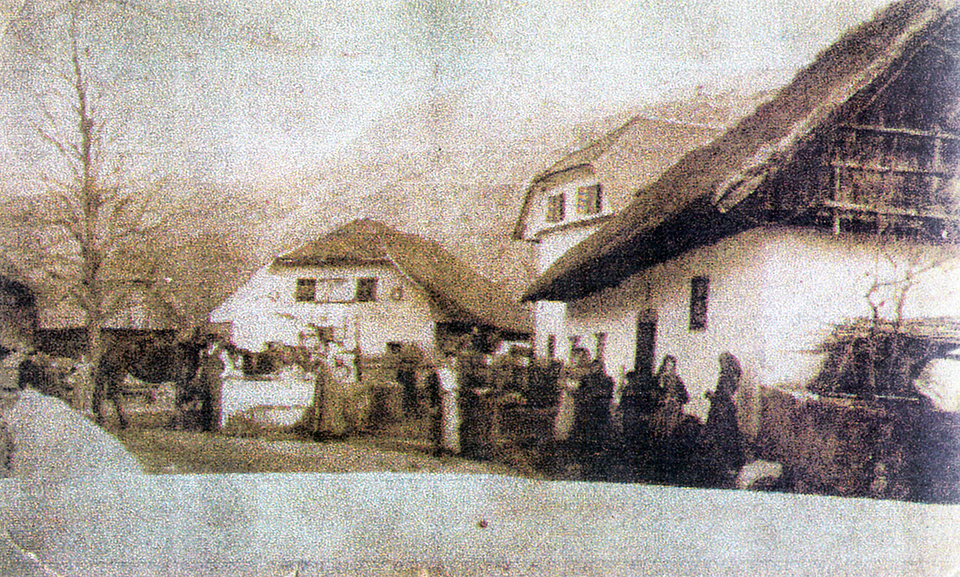
Čop's birth house in the year 1895
Matija's early education was at the parish school in Rodine. His teacher was the priest of Rodine Franc Saleški Christian, who noticed the boy's talent and encouraged his parents to send their son to school in Ljubljana.
At the age of ten, Matija left his home village and went to Ljubljana to attend the first grade of a primary school. At that time, German was the main language in schools, however, Matija did not know German, hence he had problems at first.
Carniola was occupied by Napoleon's forces. The French authorities closed the schools and Matija returned home to Žirovnica. He was taught by Janez Krstnik Kersnik from Moste, a professor at the Ljubljana Lyceum. Matija quickly learned German and in 1810 left primary school education with honours.
Matija went to college in Ljubljana and graduated with excellent results. He studied ancient Greek and Latin, and also learnt French and Italian from the college professor Valentin Vodnik.
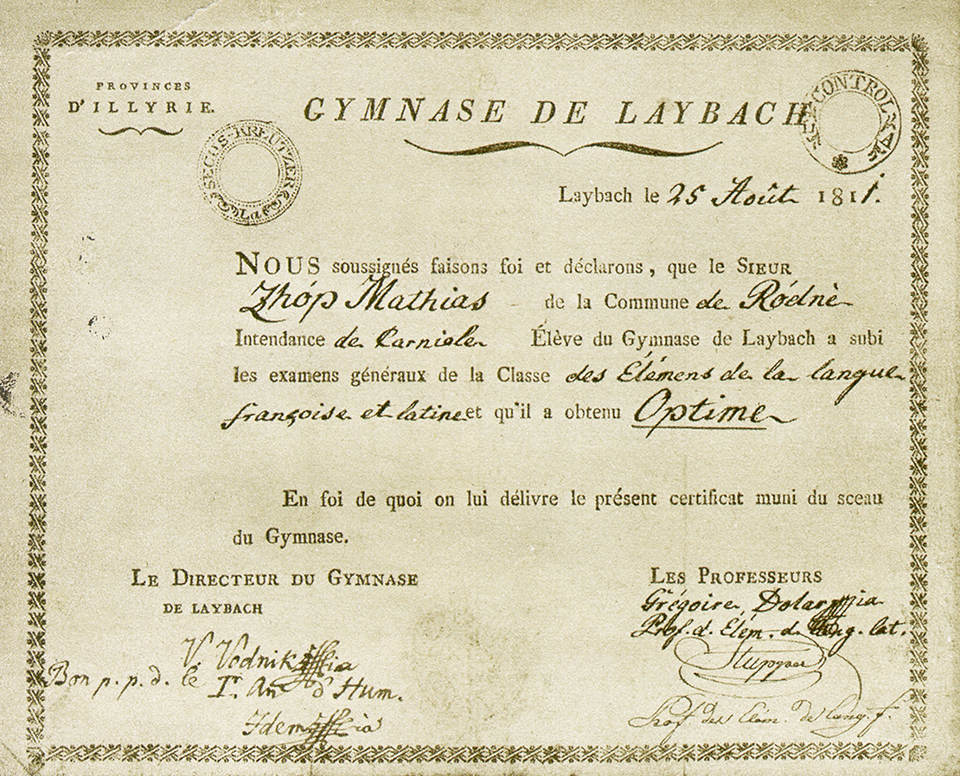
Matija Čop's college leaving certificate, which shows he achieved excellent results.
Matija studied philosophy at the Ljubljana Lyceum between 1814 and 1816 and passed the exam to become a teacher. A year later, he completed his third year of study of philosophy in Vienna. His studies included religion, rhetoric, Austrian history and classical philology with Latin and ancient Greek. During his studies, Matija found himself attracted to European literature.
He wanted to read in the original languages, so he started deepening his knowledge of foreign languages and learned English, Spanish and Provençal. In Vienna, he met Jernej Kopitar, who at the time was the greatest Slovenian linguist.
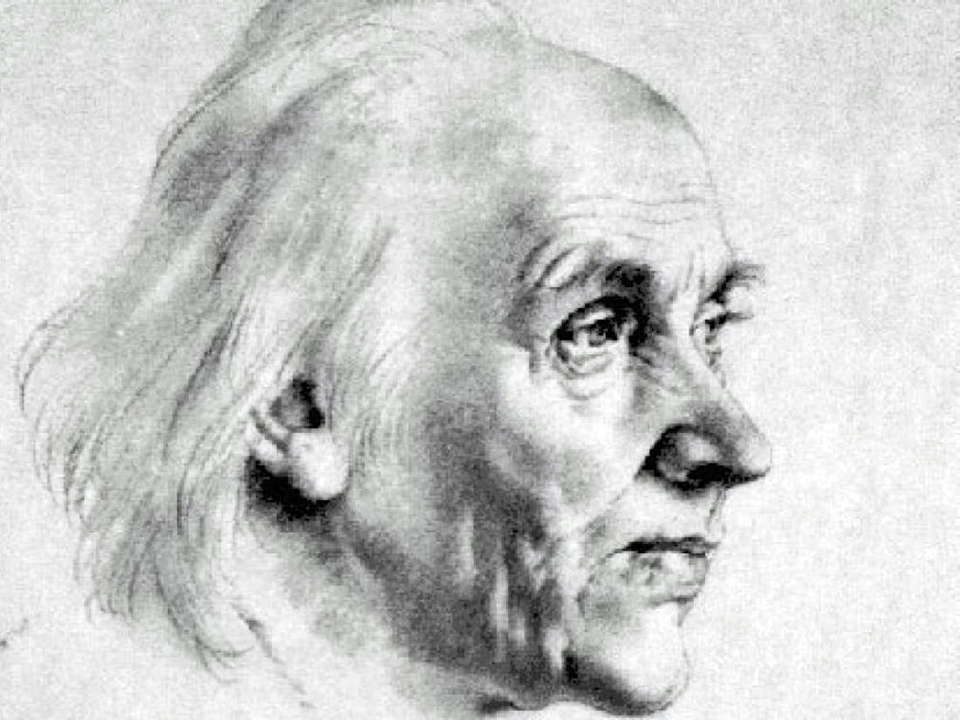
The linguist Jernej Kopitar, who Matija Čop met in Vienna. Drawing by Sava Sovreta.
In autum 1817, Matija Čop began to study theology (divinity), however, he felt that the priestly profession was not for him. During his studies, which he abandoned after three years, he began to learn Hebrew.
In December 1819, Matija successfully passed the exam to become a college professor and applied for a position as a teacher of classical languages.
In autumn 1820, he began teaching languages at the college in Rijeka, where he remained for two years. It was there that he met the Mossingtons, a merchant family, and taught them Italian and French in exchange for learning English. He asked their daughter Mary for her hand in marriage, but she turned him down.
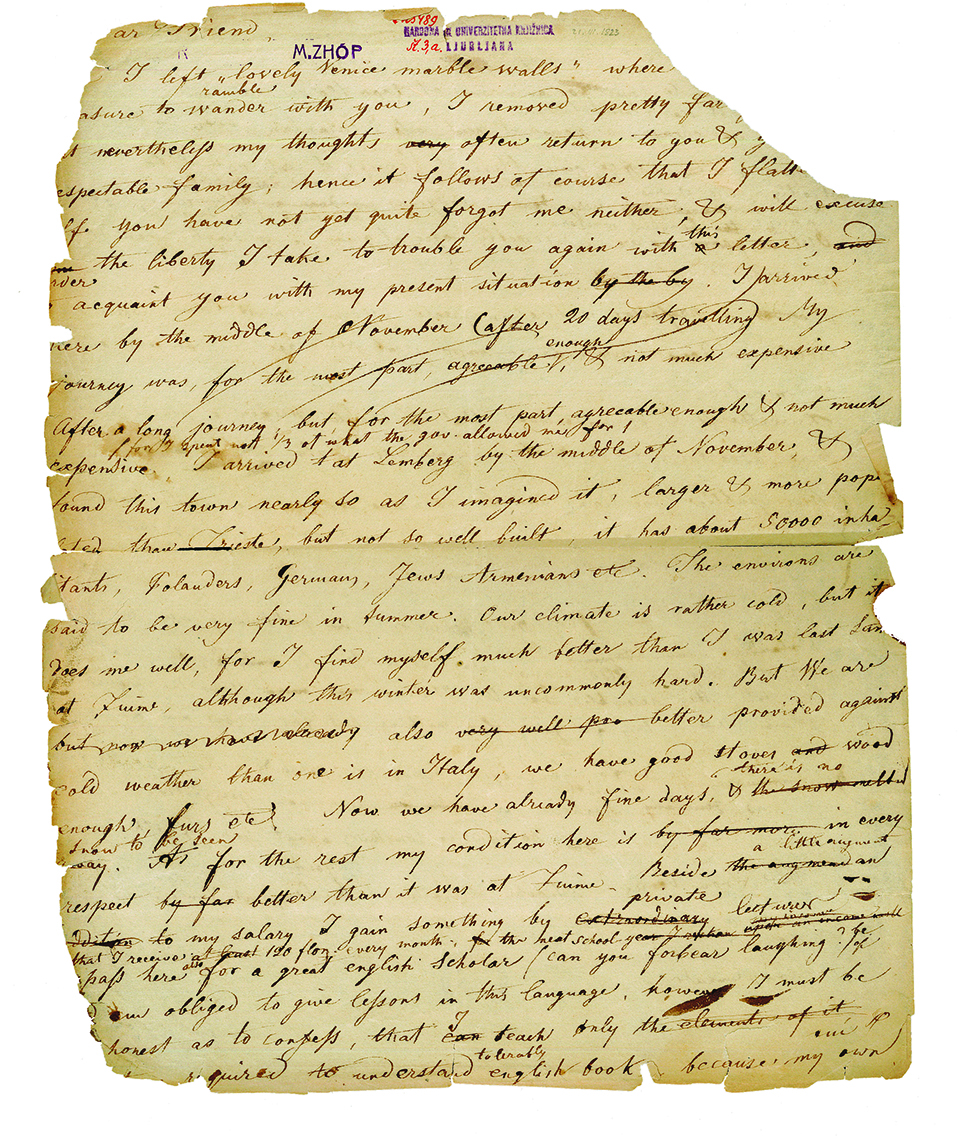
The first page of a letter to Moses Mossington, the father of Mary Mossington
In 1822, Matija accepted a job in the Ukrainian Galicia, at the college in Lviv, where he remained for five years. He taught at the college for three years and then became an assistant for classical philology at the local university.
Matija quickly learned Polish, Russian and Czech whilst in Lviv. However, he was not happy in Galicia and in 1827 asked to be transferred to the Ljubljana Lyceum. He returned to Ljubljana in November 1827 and became a professor at the Ljubljana Lyceum. A year later, following the death of Matija Kalister, the librarian at the Lyceum Library, he took over management of the library.
In 1828, Matija Čop again met France Prešeren, who had just returned from Vienna to Ljubljana. That year, Čop provided the initiative for the publication of the Kranjska čbelica (Carniolan bee) almanac, which led to the deepening of the dispute over the Slovenian alphabet.
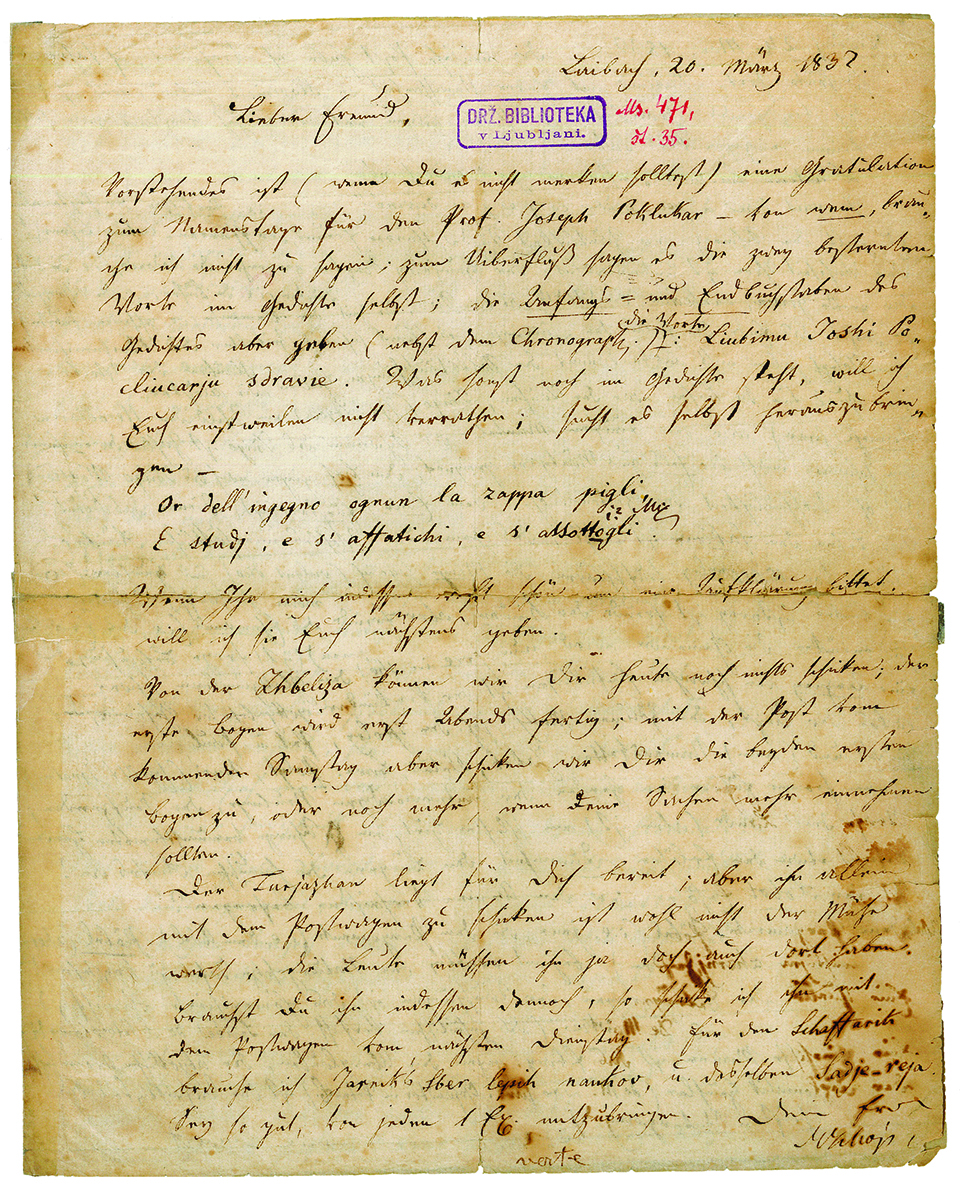
The first page of a letter from Matija Čop to France Prešern
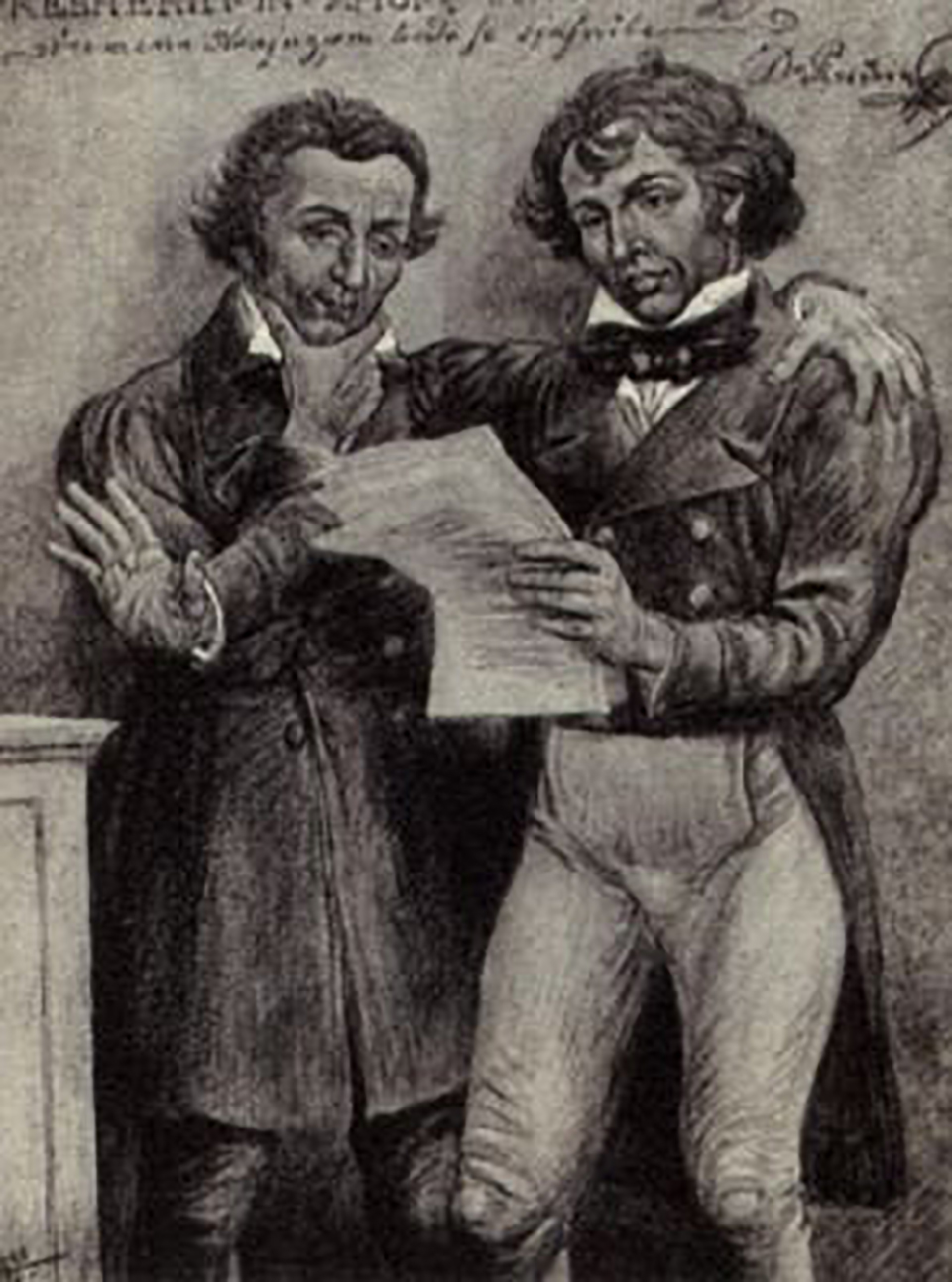
Čop and Prešeren
On 8 June 1830, a decree saw Matija Čop become a full-time librarian in the Lyceum Library. He gave up teaching and worked in the library until his untimely death.
Publication of the 1st volume of the Kranjske čbelica almanac.
At Kopitar's request, Čop compiled a comprehensive history of Slovenian literature, which was published in the work History of the Slavic Language and Literature by the Czech Pavel Šafařík. Matija Čop hesitantly decided to write and sent the manuscript to Šafarik in June 1831, however the work was not published until 33 years later in Prague. Čop thus became the first Slovenian literary critic and historian.
Publication of the 2nd volume of the Kranjska čbelica almanac. In the Klagenfurt newspaper Carinthia, Dr. Jakob Zupan took a critical look at the Metelko alphabet, a cumbersome way of writing the Slovenian language. France Prešeren immediately joined him, but Matija Čop did not. It was not until a year later that Matija Čop published his critical discussion supported by thorough evidence. The silence earned him a sarcastic text by Prešeren titled Čudni dihur (The Strange Ferret).
‘There is a ferret in Ljubljana who devours books day and night, but does not write anything of his own.’ France Prešeren

Bibliographic review of Slovenian grammar, manuscript by Matija Čop
Publication of the 3rd volume of the Kranjska čbelica almanac.
The Czech poet František Čelakovsky published a review of the first three volumes of Kranjska čbelica in Prague. He suggested that Slovenes should adopt the Czech alphabet due to the similarity of the languages.
In February 1833, Matija Čop published in the newspaper Illyrisches Blatt a criticism of the proposal that Slovenes adopt the Czech alphabet and added his weighty opinion. In three supplements of the newspaper, he published a critical discussion of the Slovenian alphabet war. The study contributed significantly to the creation of the Slovene alphabet and ranks among Čop's most important works. The Viennesse government banned the use of the Metelko alphabet in school books the same year.

Cover of the critical discussion Der slowenische ABC-Krieg (Slovenian alphabet war)
Publication of the 4th volume of the Kranjska čbelica almanac.
Matija Čop drowned in the Sava near Ljubljana on 6 July 1835, whilst in the midst of drawing up new plans for Slovenian literature and for an orderly, civilsed Slovenian literary language. France Prešeren, who painfully mourned his friend's death, wrote:
‘If he had more time, he would have enlightened his nation with his letters.’

Prešern's manuscripts titled In memory of Matija Čop

A photograph of the headstone of Matija Čop's grave at the Ljubljana Navje cemetery